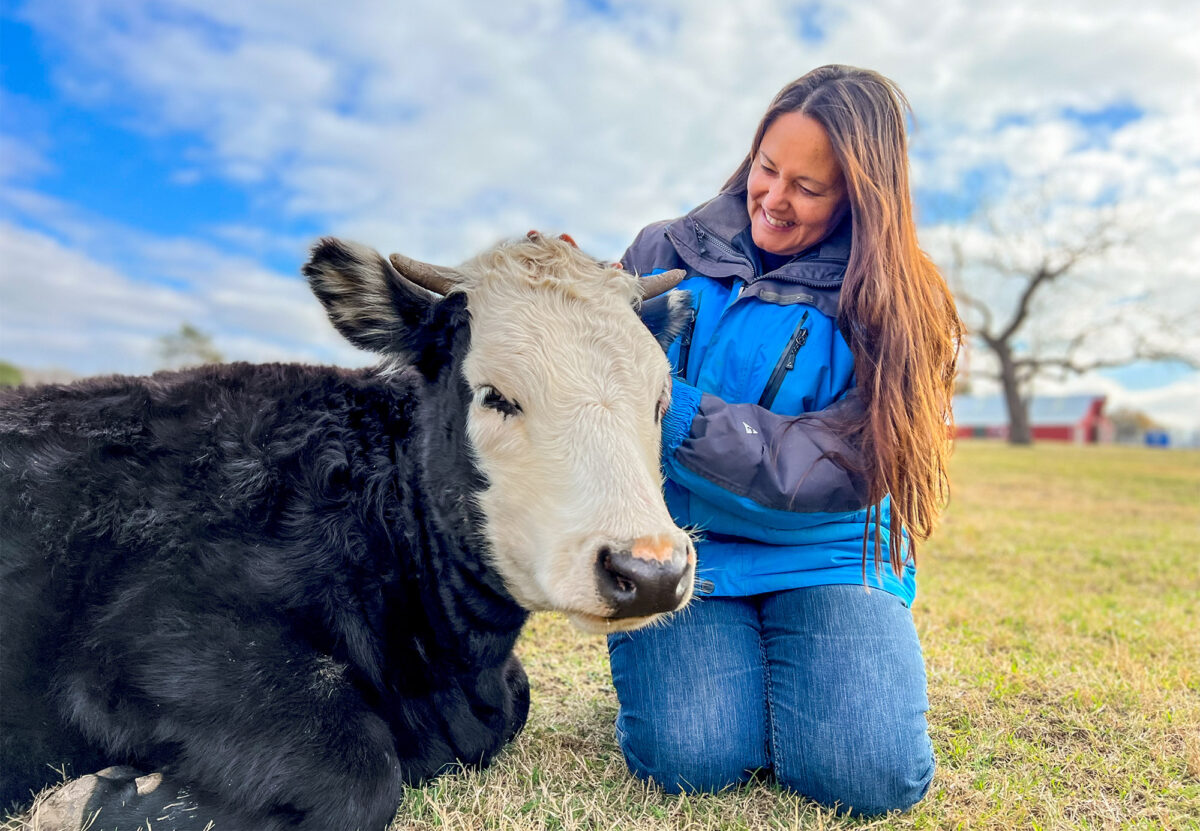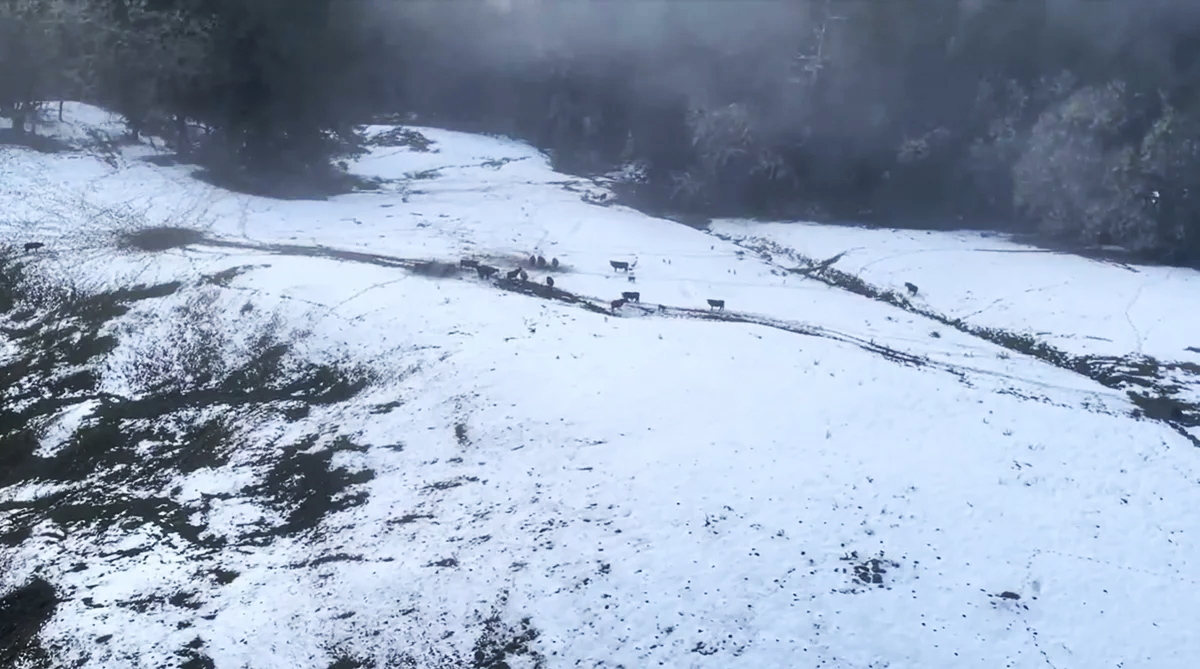When I was asked to review a book on cow hug therapy, I thought it sounded cute but maybe a little hokey. I was surprised to find “Cow Hug Therapy: How the Animals at the Gentle Barn Taught Me about Life, Death, and Everything In Between” deeply moving and eye-opening.
I was already familiar with author Ellie Laks and her Gentle Barn animal sanctuaries. In 1999, Laks began rescuing and rehabilitating farmed animals, giving them lifelong homes on preserves in California, Tennessee, and Missouri. The Gentle Barn’s mission is “inspiring kindness and compassion towards animals, our planet, and each other.”

Laks’ first book, published in 2014, tells the story of founding and growing the Gentle Barn. Published by New World Library, “Cow Hug Therapy” is about how cows and other animals help people heal. My biggest revelation while reading the book was how individual cows are. I haven’t been around cows much. Before reading, I hadn’t fully considered their separate personalities, nor that some may actively want to help people emotionally.
So, what is cow hug therapy? It’s pretty much what it sounds like — lying down and hugging a cow. Laks writes that thousands of Gentle Barn visitors have greatly benefited from this experience, which calms them and frees their minds from thoughts and worries. She has found it especially helpful for abused and neglected teens who are too shut down and angry to participate in traditional talk therapy. Why does it work? The size and gentleness of the cows make many people feel tiny and safe.
“When we’re born, we’re held on our parent’s chest,” Laks writes. “We can hear their heartbeat, the rhythm of their breathing, and we feel safe even though we’re small, helpless and vulnerable. When we grow up, there is nothing that simulates that experience, except for hugging a cow.”

Many of the book’s chapters focus on a single cow, their rescue story, and what they taught Laks and others. It’s amazing how much people can relate to cows, especially if they follow one on social media.
Laks and her husband Jay Weiner rescued Dudley, a small red and white cow, who lost a hoof after it got tangled in baling wire. The couple’s frequent social media updates about Dudley’s long recovery (including underwater therapy, acupuncture, and getting fit for a prosthetic) at the University of Tennessee Knoxville Large Animal Hospital garnered Dudley a large following. When he came home to the Gentle Barn, a group of amputees came to see him. Soon, even more visitors arrived.
“Word spread rapidly about Dudley, and the requests to meet him grew in number every week,” Laks writes. “Children in wheelchairs, kids born with differently formed limbs, people with terminal illnesses, war veterans, and teens in foster care, they all wanted to see this cow who was so full of joy despite his challenges. They needed to know they were not alone.”

Laks is intensely devoted to caring for and connecting with animals. She details her connection with cows and other creatures, her convictions about reincarnation, and the continued spiritual presence of the animals that love us. Whether or not readers relate to every spiritual detail of Laks’ story, I’m pretty sure most will put down this book with an urge to hug a cow. I know I did.
Writer received a free copy of the book for review.


